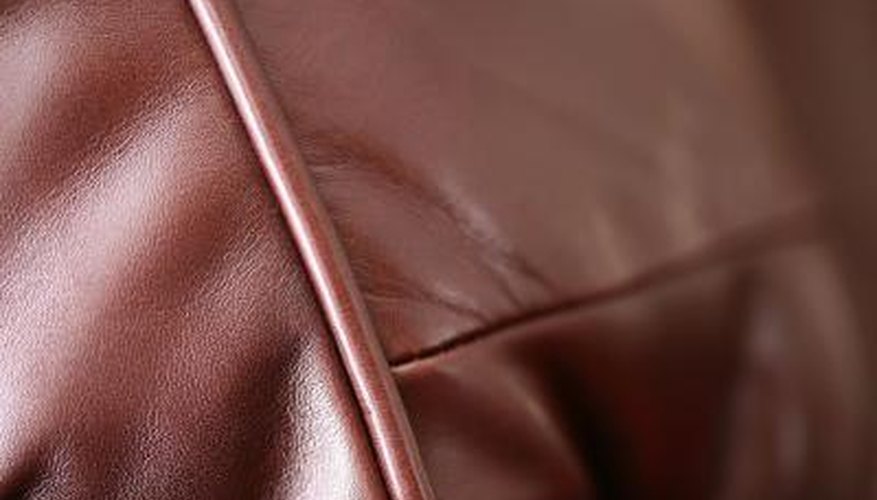While leather couches are durable, they are also susceptible to stains and sun damage. A bleach stain on your leather couch can be extremely disheartening when you find it. Repair the stain with a special dyeing kit designed for the process or puchase the items separately from a leather repair dealer. You can repair the entire couch in a couple of days and keep leftover leather supplies for future repairs.
- While leather couches are durable, they are also susceptible to stains and sun damage.
- A bleach stain on your leather couch can be extremely disheartening when you find it.
Clean the bleached area of your leather couch with a sponge dampened in soapy water. Scrub the area thoroughly to remove all traces of dirt, grease and other debris. Anything remaining on the leather surface can cause the dye to fail.
Apply a liberal coat of leather prep solution to the bleach stain on your couch, ensuring the area is damp but not saturated. Leather prep solution, available at a leather dealer, is formulated to leave a slightly sticky residue the dye can adhere to. Scrub the bleach stain with a soft cloth to open the pores of the leather. Blot away excess moisture with paper towels or cloths, then allow the leather to dry completely, about 15 minutes.
Sand the bleached area lightly with fine-grit sandpaper to roughen the surface, allowing the dye to adhere to the leather fibres. Clean the dust created by sanding with a dampened sponge and allow the surface to dry.
- Apply a liberal coat of leather prep solution to the bleach stain on your couch, ensuring the area is damp but not saturated.
- Sand the bleached area lightly with fine-grit sandpaper to roughen the surface, allowing the dye to adhere to the leather fibres.
Shake the bottle of leather dye thoroughly before applying it to the couch. The pigments need to be distributed evenly in the bottle. Apply several light coats of the leather dye to the couch, using an applicator sponge. Allow the leather to dry completely between applications. Light coats are better than a single thick coat and will provide better colour results. Brush away bubbles or streak marks with the tip of the applicator sponge or a clean, soft cloth.
Allow the leather couch to remain undisturbed for 48 hours to give the dye time to cure properly. Wipe the couch with a slightly damp sponge to remove any traces of colour the leather did not absorb.
WARNING
Leather prep is a strong alcohol-based product, so use adequate ventilation during use, warns the website Leather Magic.
